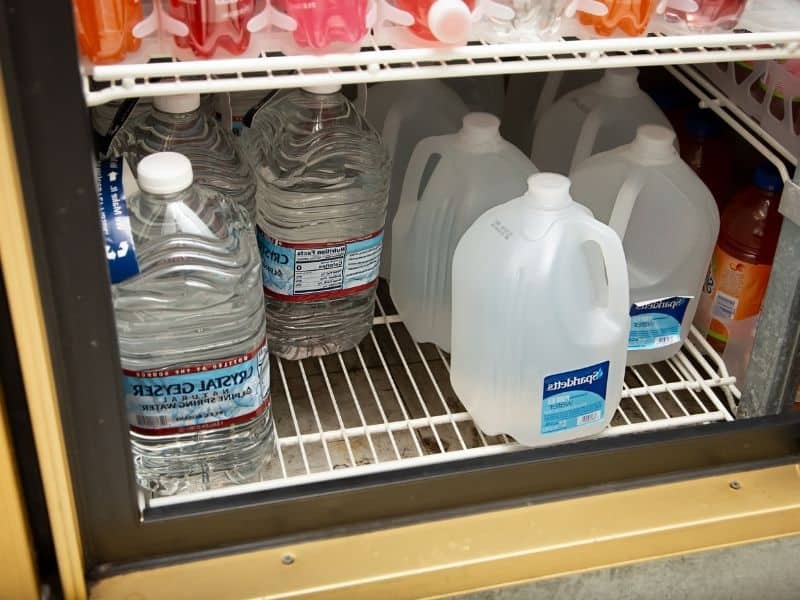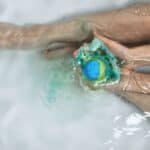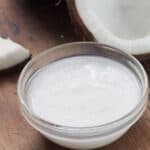Figuring out the water to lye ratio for soap making is one of the more technical aspects of learning how to make your own handmade soap. The good news is that like most things, it only sounds complicated. Once you see the numbers in front of you it becomes a little bit easier to figure out. So, what is the water to lye ratio for soap making?
The water to lye ratio for soap making is 2:1 or 66% water and 33% lye. It is generally better to use a bit less water than too much water, using less water is sometimes called water discounting. It can help your soap harden and cure faster.
These ratios are completely based on weight, not volume. All measurements of soap-making materials are done by weight. As you can imagine, a powder such as lye is could be easy to compress into a scoop which would make measuring by volume inaccurate.
Water & Lye Ratios For Soap Making
The water to lye ratio is important because it directly affects the properties of your soap. If you use too much water, your soap will be soft and low sudsing. If you use too little water, your soap can be harsh and difficult to cleanse with.
In practice, this means whatever you measure out for your lye, you will double that measurement in water.
Examples:
3 oz lye : 6 oz of distilled water
2 oz of lye : 4 oz of distilled water
5 oz of lye : 10 oz of distilled water
100 grams of lye : 200 grams of water
In reality, these are generalities and you are unlikely to find a recipe that exactly follows these guidelines, but they will all be in the neighborhood. You also have to consider the type of oil you are using in your soap when making these calculations.
Some types of oils will allow you to use lower water to lye ratio and ultimately let you get away with using a little less water. As I mentioned earlier, when you use less water and create a more concentrated lye mixture it is called water discounting.
Measuring Water And Lye For Soap Making
Now that you know the water to lye ratio, it’s time to learn how to measure your water and lye.
When measuring water and lye for soap making, always measure by weight. You should have a jewelers scale for small amounts and a kitchen scale for larger batches.
Always measure them into separate containers. This is for your safety as well as the success of your soap. Only have they both been measured is it okay to combine them in a heat-resistant container or pan.
You want to make sure you get a container that can withstand the effects of the lye and the heat generated by the combination of the ingredients.
When Water and Lye Ratios Change
The water to lye ratio is not always 2:1.
There are times when you will want to change the water to lye ratio. The most common reason for this is water discounting, which I mentioned earlier. When you want your soap to harden faster, using less water can be helpful.
Other times you may want to change the water to lye ratio if you are working with a special oil that needs more or less water.
You can also play around with the water to lye ratio to create different properties in your soap. For example, using higher water to lye ratio will give you a softer bar of soap.
Water Discounting Explained
Water discounting is the practice of using less water than what is called for in a recipe.
The most common reason soap makers water discount is to speed up the saponification process. Saponification is when the oils and lye come together and turn into soap. This also allows the soap to harden and even cure faster than it normally would.
The water to lye ratio has a direct effect on the speed of saponification. The higher the water to lye ratio, the longer it will take for your soap to come to trace. Trace is the point at which the oils and lye have saponified and the mixture thickens to the point that you can leave trails in it with a spoon.
Take care to avoid false trace, we have an article that describes false trace here.
If you are water discounting, you will want to pay close attention to your soap as it comes to trace. It can go from not quite there yet to too thick very quickly.
Another reason soap makers water discount is because it creates a more concentrated lye mixture. This can be helpful if you are working with oils that need a higher lye concentration to saponify properly.
Finally, water discounting can also be used to create a bar of soap with different properties. Soap made with a higher water to lye ratio will be softer than soap made with lower water to lye ratio.
Water discounting is not for everyone and it’s not something you should do with every batch of soap you make. It’s important to have a good understanding of the water to lye ratio and how it affects your soap before you begin water discounting.
Risks and Benefits of Water Discounting
As with anything, there are risks and benefits to water discounting.
The biggest risk is working with a lye concentration that is too high. This can be dangerous and it can also cause your soap to seize or turn to mush.
If you are new to soap making, or if you are not comfortable working with lye, I would not recommend water discounting.
The benefits of water discounting are that it can speed up the saponification process and it can create a bar of soap with different properties.
Some people find that water discounting makes their soap last longer in the shower, although I have not personally found this to be the case.
If you decide to water discount, start with a small water discount and work your way up from there. A water discount of 10-20% is a good place to start.
Frequently Asked Questions
The water to lye ratio is approximately 66% water and 33% lye, or 2:1.
There are times when you will want to change the water to lye ratio. The most common reason for this is water discounting, which can speed up the saponification process. Other reasons include working with a special oil that needs more or less water, or creating different properties in your soap.
Water discounting is the practice of using less water than what is called for in a recipe. The most common reason soap makers water discount is to speed up the saponification process.
The biggest risk is working with a lye concentration that is too high. This can be dangerous and it can also cause your soap to seize or turn to mush. If you are new to soap making, or if you are not comfortable working with lye, I would not recommend water discounting.
The benefits of water discounting are that it can speed up the saponification process and it can create a bar of soap with different properties. Some people find that water discounting makes their soap last longer in the shower, although I have not personally found this to be the case.
If you decide to water discount, start with a small water discount and work your way up from there. A water discount of 10-20% is a good place to start.
Conclusion
In conclusion, the water to lye ratio starts at approximately 2:1 and can change depending on the type of oils you decide to use in your soap-making recipe.
Water discounting is the practice of using less water than what is called for in a recipe and it can be done for various reasons. Water discounting can speed up the saponification process and it can create a bar of soap with different properties.
If you water discount, start with a small water discount of 10-20% and work your way up from there. I hope you found this blog post helpful!






